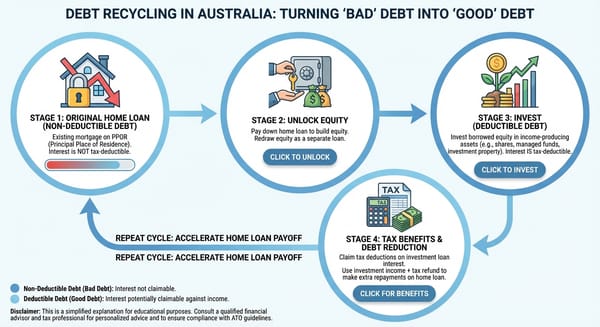Are Your Pension's High Fees Stealing Your Future?
For too long, millions of people have entrusted their retirement savings to high-cost funds, often without understanding the massive financial drain. I recently offerred to look over a friend's UK pension and what I found was shocking!

Whether you're in London, Sydney, or New York, the principle of a good retirement fund is simple: compound returns are your best friend, and high fees are your worst enemy.
For too long, millions of people have entrusted their retirement savings to high-cost funds, often without understanding the massive financial drain. I recently offerred to look over a friend's UK pension and what I found was shocking!
From looking at the fund factsheet and the charges listed on the pension website for my friend's UK pension fund—the SJP Polaris 3 Acc Fund—the numbers are a stark warning for all pension holders whatever country you're from.
The Evidence: Dissecting a High-Cost Pension Fund
This fund factsheet illustrates a common, high-cost model of retirement investing. The fund, which aims for capital growth, is a high-cost option typically wrapped in a full-service advice model (this means lots of layers of fees, good for your advisor, bad for your life savings)
The issue isn't just the fund's stated charge; it’s the total cost that eats into your wealth year after year. Here is a breakdown of the typical fees associated with a high-cost fund selection, compared to a globally diversified, low-cost index fund, the Vanguard LifeStrategy 80% Equity Fund.
Table of Incurred Fees: Active vs. Passive
| Fee Component | High-Cost Fund (e.g., SJP Polaris 3) | Low-Cost Index Fund (Vanguard LS80) |
| Initial Advice/Entry Fee | Up to 3.0% of your investment value (Paid upfront) | 0.00% (None) |
| Ongoing Fund Charge (OCF) | 1.67% per annum (Includes fund, product, and ongoing advice charges) | 0.22% per annum |
| Estimated Transaction Costs | Approx. 0.25% per annum (Internal trading costs) | Included in the OCF/minimal |
| Platform Fee (Example UK SIPP) | Included in the high 1.67% OCF (vertical integration) | £155.88 / year (Flat fee SIPP platform for pot >£50k) |
For a pension investor choosing this high-cost model, the annual ongoing fee is over 7 times higher (1.67% vs. 0.22%) than the comparable Vanguard fund, even before factoring in the steep initial advice charge of up to 3%.
The Hidden Cost: How Fees Devour Your Retirement
A difference of less than 1.5% in annual fees might sound small, but over a decades-long retirement journey, the effect of compounding those charges is devastating.
Imagine two investors, both with a £200,000 pension pot, achieving the same gross market return of 8.4% per year (the 10-year annualised return of the Vanguard LS80 fund).
- Fund A (SJP Polaris 3): Net return of 8.4% minus the 1.67% ongoing charge = 6.73% net return.
- Fund B (Vanguard LS80): Net return of 8.4% minus an estimated 0.25% total annual cost (including the SIPP platform flat fee on a £200k pot) = 8.15% net return.
The effect of this 1.42% difference in annual fees over a 30-year period is staggering:
Effect of Fees on a £200,000 Pension Pot Over 30 Years
| Fund | Annual Net Return | 30-Year Final Value | Lost to Fees vs. Low-Cost |
| Low-Cost Index Fund (Vanguard LS80) | 8.15% | £2,119,520 | £0 |
| High-Cost Fund (SJP Polaris 3) | 6.73% | £1,443,700 | £675,820 |
The high-fee fund results in losing over £675,820 in future wealth and compounded growth—all down to high fees.
5 Red Flags Your Pension Fund May Be Robbing You
Do your future self a massive favour, take immediate action to check your pension statement for these critical warning signs.
1. The "Fund of Funds" Trap 🚩
The SJP Polaris fund factsheet confirms this fund invests in other collective investment schemes (other funds). This structure, known as a Fund of Funds, is a major red flag. It means you are not only paying the top-level annual fee, but the underlying funds within it are also deducting their own fees, management costs, and performance fees. These layered charges are often not clearly disclosed in a single percentage figure, acting as hidden fees that silently drag down your performance.
2. Sky-High Ongoing Charges (OCF/TER) 🚩
If your fund's Ongoing Charges Figure (OCF) or Total Expense Ratio (TER) is over 1.0%, alarm bells should be ringing. If it's over 1.5%—as seen in the example fund—it is an aggressive wealth-eroder. Low-cost, globally diversified index funds are typically available for under 0.30%. The difference is pure profit for the provider and pure loss for you.
3. Upfront Sales/Advice Charges 🚩
A fund should never charge you 1%, 3%, or even 5% just to invest, as seen in the SJP example. These are not "fees for access," they are commissions for the adviser, and they immediately reduce your invested capital. Good advice should be a fixed fee, uncoupled from the size of your investment, or a much lower percentage on a platform that offers advice.
4. Active Management Underperformance 🚩
High-fee funds often employ "active fund managers" who attempt to beat the market. Studies consistently show that the vast majority of active funds fail to beat their benchmark after their high fees are deducted. You pay a premium for expertise that consistently delivers sub-par results. Always check your fund's net performance against a simple global index fund over 5 and 10 years.
5. Captive Provider or Limited Choice 🚩
If the fund is only available through a single wealth management firm or adviser, and you cannot easily move it to a low-cost platform like Vanguard or a fixed-fee SIPP, you are a captive client. This limits your ability to seek better value or superior investment options, forcing you to pay the provider’s premium for life.
Take Action Today
Regardless of whether you're using a 401(k) in the US, a SIPP/Nest in the UK, or a Superannuation fund in Australia, the solution is the same:
- Find your OCF/TER: Check your latest pension statement or fund factsheet for the Ongoing Charges Figure.
- Compare: Search for a comparable low-cost global index fund from providers like Vanguard, BlackRock, or iShares.
- Move: If your OCF is too high, investigate transferring your pension to a low-cost platform that offers flat annual fees or low percentage charges, and switch your funds to passive, globally diversified index trackers.
- Run the numbers yourself. Enter your pension pot size and fees into the excellent Money Smart funds Fee Calculator and see the effect on your retirement. Hint, you may want to be sitting down when doing this.



